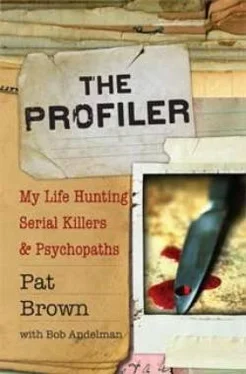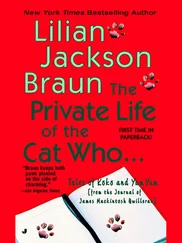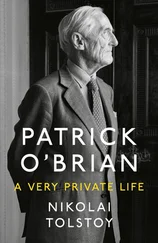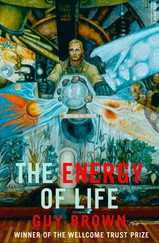I decided I would profile this case and help in one manner or another. Perhaps I could develop a lead that would help the police department. Perhaps I could come up with an answer that would help the family cope. Not a perfect world, not a perfect case, but if I could do anything to help, I would.
I went forward on Art’s invitation because I was concerned that there might be a predator on the loose if Sam was not involved.
THE FIRST THING I did was hear the circumstances of the case from Art. He told me what had happened, and then he added some other interesting details.
After several months, the police finally released Mary Beth’s car. Art attempted to drive it away but couldn’t because the clutch was destroyed. He had it towed to a mechanic, who yelled at him for tearing it up so badly.
This discovery actually helped convince Art that Sam was in the clear. Art thought that if Sam had really killed his mother and was trying to dump the car on the other side of town just to make it look like the offender drove it there, he would have had to purposely destroy the clutch. Sam not only knew how to drive a car with a manual transmission, but he owned one, too. It would take clever thinking for a man who just accidentally killed his girlfriend to think, “I’ll leave the car in the ghetto and make it look like I didn’t know how to drive it. If I destroy the clutch, it won’t look like me.”
Art brought this detail to the investigating detective’s attention and she was, admittedly, surprised. He passed along the mechanic’s contact information to the police for confirmation but they never called. They were only interested in evidence that implicated Sam, not excluded him.
It’s clever but unlikely that an offender in the midst of such desperation would be smart enough to cook that up. More likely, the person who actually took the vehicle did not know how to drive a stick-shift car, and that’s why the clutch was destroyed. (The car was dusted for prints but the police never told Sam or Art what they found.)
That began the process of conclusively leading me away from believing Sam Bilodeau was the perpetrator.
I interviewed Sam and the people who could verify his whereabouts on the day of Mary Beth’s murder. He had a pretty airtight alibi for the entire day, so if Mary Beth was missing by noon, Sam Bilodeau was not involved. He could be involved only if she was alive when he returned home from work, but the fact is she did not show up for her planned lunch, so therefore she was likely dead by noon.
I WONDERED WHY Sam had confessed.
I can learn a lot during an interview. Sam was an amiable fellow-gullible, actually. The police could have led him into saying anything if they pushed hard enough. He was a teddy bear, and he was a person under great duress, an emotional wreck who found his fiancée, the woman he planned to marry, dead. The brain does not think straight under such circumstances.
Sam had slept only a couple of hours before he woke and found Mary Beth’s body. I can’t believe when he got to the hotel he jumped into bed and got a blissful eight hours of sleep. By the time he was interviewed for the second time on Saturday evening, he had been up for almost forty-eight hours. Seriously exhausted and emotionally devastated, an easygoing, guileless personality is a sitting duck for manipulation by clever, seasoned detectives. He just might make a confession that he didn’t really mean. He was so confused that he didn’t know what he was saying anymore. He had no family present, no attorney to guide him. He wasn’t a fast-talking con man, so he answered their questions as honestly as he could and he eventually gave the police what they wanted. Like many a person who has confessed after lengthy interrogation, he just wanted the questions to stop, he wanted to not talk about the horrible incident anymore, he just wanted to lie down. He simply reached a point where he was too tired to care anymore.
I was not convinced that Sam had the personality to kill. He had no violent background and no motive-there was no life insurance from which he or even Mary Beth’s son could have gained, for example. There was not any great equity in the condo that she owned alone, and her death left Art responsible for an $86,000 mortgage. Mary Beth’s son said that Sam and his mother got along fabulously. There was nothing there, no reason for him to kill his fiancée.
I could not envision such a docile man becoming so angry that he smacked his fiancée. I found it even harder to believe he would have strangled her. Then, for him to be so unbelievably clever and calm that he could place her body in the closet, remove items to stage a burglary, drive the car to a black area of town to throw the blame on someone else, destroy the clutch so it would look like the car had been driven by someone unable to use a stick…no, no, not this man.
Sam Bilodeau did not have a motive or the personality or the opportunity to commit this crime.
IN MY INVESTIGATION, I put Sam aside and looked at the crime itself.
The first thing that struck me was that the Townsend condominium was out of the way. It wasn’t a location a criminal would pick purely by accident. It wasn’t an isolated house that would catch one’s eye, it wasn’t an easily accessible end unit, it wasn’t even a condo on the first floor. The killer wouldn’t be someone who just happened upon Mary Beth’s condo and thought, Oh, I think I’ll just slide over to that door and try the handle. What we know happened at the crime scene was that there was a burglary; someone came into her apartment and took things that belonged to Mary Beth. He took her jewelry, he took rolled quarters that were set aside for future laundry use, and he took her vehicle.
The police said she was not raped, but neither Art nor I saw the autopsy report, so there was no way to know if that was true or not. When Sam found her in the closet, Mary Beth was not entirely dressed. It appeared she might have come back from the swimming pool or just come out of the shower, and was interrupted while she was getting dressed. Sometimes rape or sexual assault cannot be identified by an autopsy. If there is no physical damage, if the man used a condom and therefore didn’t leave any semen, we just don’t know if there was a sexual assault or not. He might even have had some weird sexual idea that had nothing to do with actual penetration. As the profiler, it was hard to tell whether this was a sexual assault and a burglary or just a burglary gone wrong.
Often, I find that these offenders overlap their crimes, and they don’t just pick one crime to commit. They are opportunists, and if they find another temptation at the scene, they can’t resist.
There was no sign of breaking and entering. Did Mary Beth open the door to somebody, or did somebody find his way in?
I was told that Mary Beth tended to leave her condo door open, or if not open, then unlocked. It was possible she went swimming and left the door open and somebody came in. Or the door was unlocked while she was taking a shower and a burglar slipped in without her realizing. Or perhaps he knocked and Mary Beth answered the door and let the person in-perhaps she knew the person. But it is not likely she would have answered the door half-dressed.
As she sometimes left the front door unlocked, it is likely someone entered the apartment believing no one was at home and surprised Mary Beth (and she surprised him). The perpetrator could have hit Mary Beth and, when she fell to the floor, strangled her to prevent identification. Upon killing her, the perpetrator grabbed what was in sight and took off. The perpetrator of this kind of crime is a relatively disorganized criminal. The planning of the crime would have been minimal and the attack a necessity for self-preservation (prevention of identification). On the other hand, maybe the guy knew she was there and planned to rape and kill her, and then stole her stuff. This would have been a little more carefully planned, but it would still be a fairly opportunistic crime, so the killer wouldn’t have had to be a brilliant criminal.
Читать дальше












